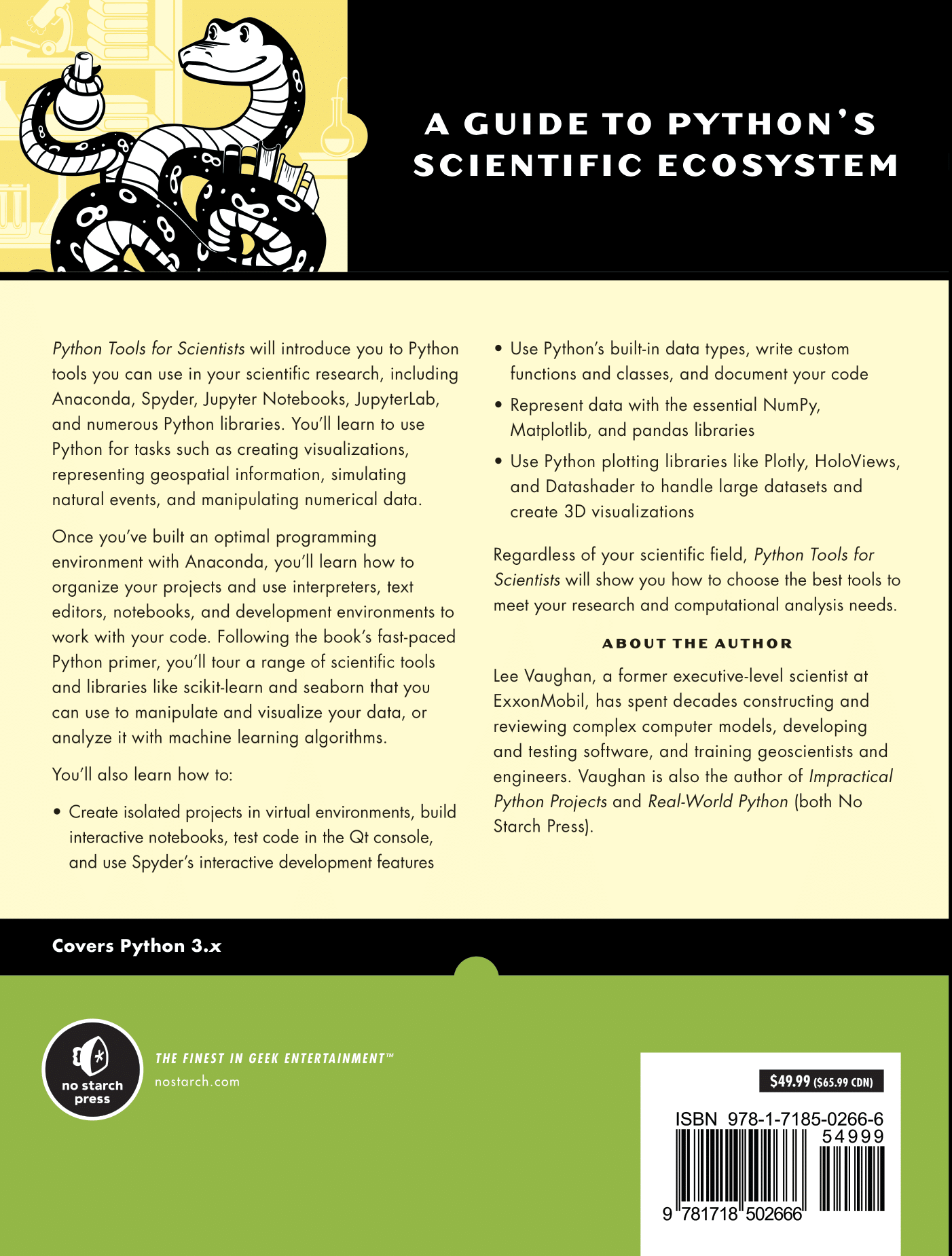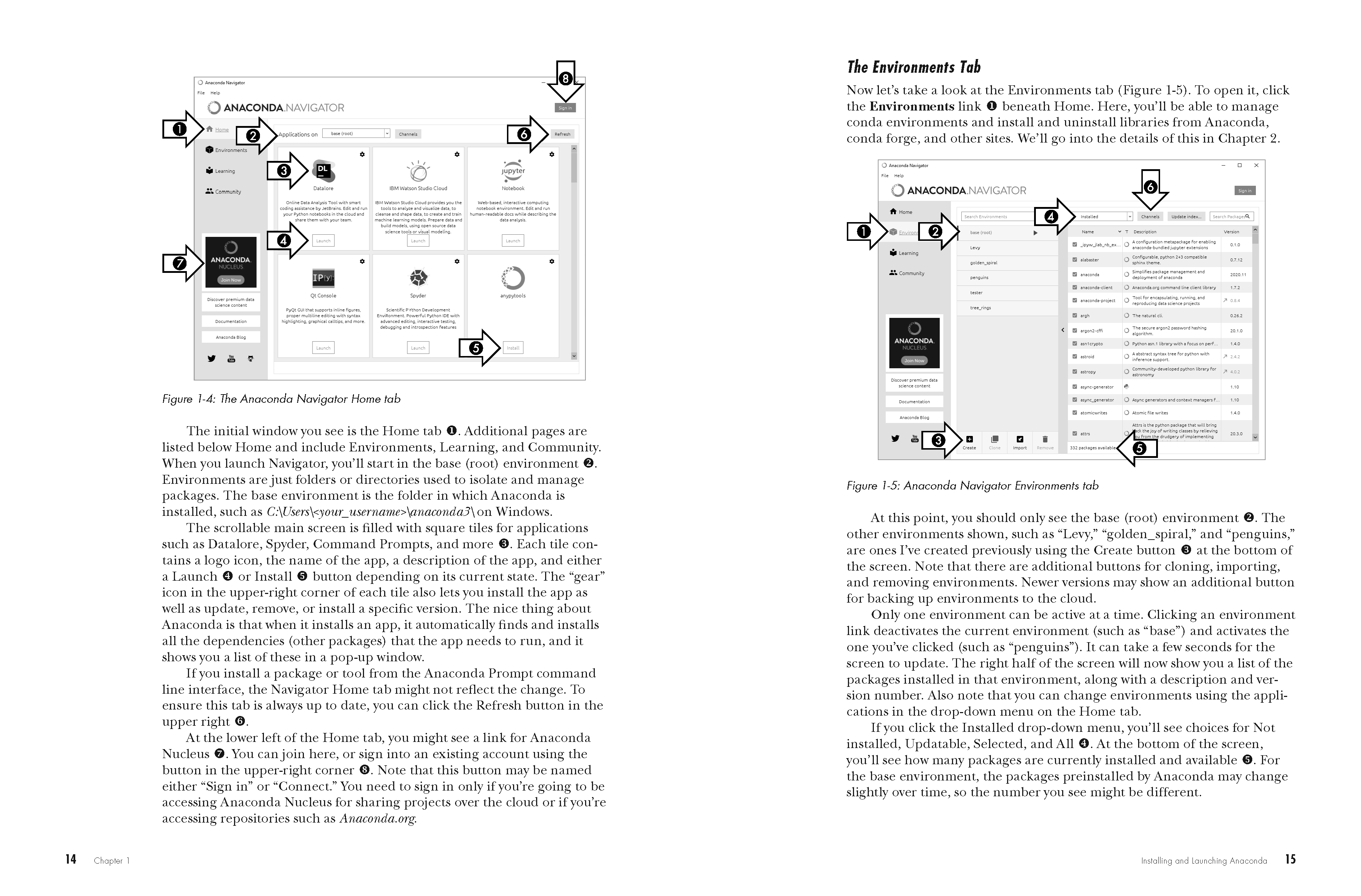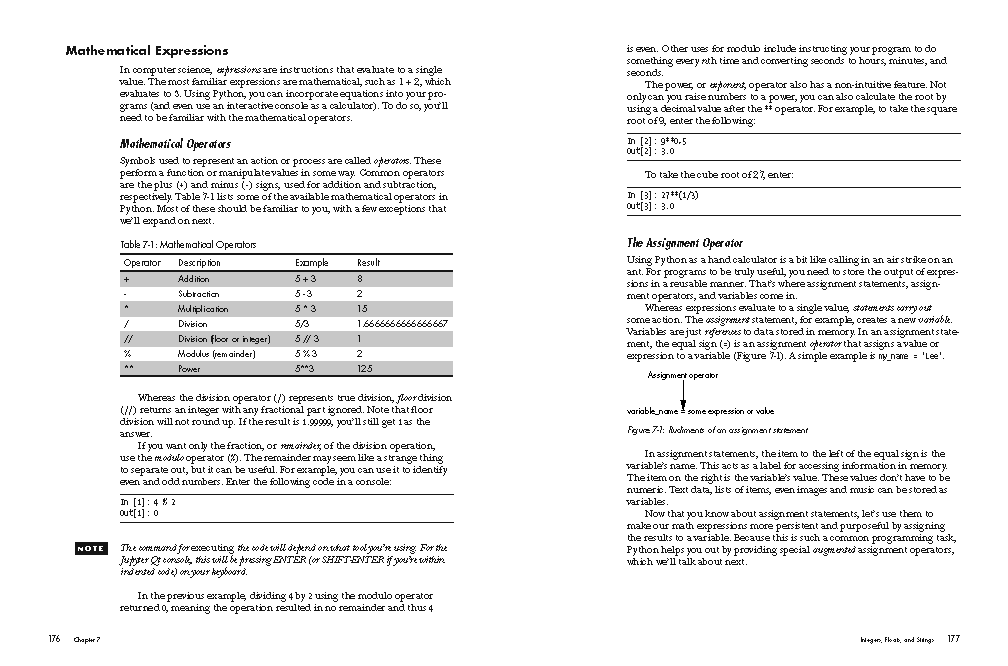Introduction
Part 1: Setting up for Science
Chapter 1: Installing Anaconda and Launching Navigator
Chapter 2: Keeping Organized with Conda Environments
Chapter 3: Simple Scripting in Jupyter Qt Console
Chapter 4: Serious Scripting with Spyder
Chapter 5: Jupyter Notebook: An Interactive Journal for Computational Research
Chapter 6: JupyterLab: Your Center for Science
Part 2: Python Primer
Chapter 7: Integers, Floats, and Strings
Chapter 8: Variables
Chapter 9: The Container Data Types
Chapter 10: Flow Control
Chapter 11: Functions and Modules
Chapter 12: Files and Folders
Chapter 13: Object Oriented Programming
Chapter 14: Documenting your Work
Part 3: The Scientific and Visualization Libraries
Chapter 15: The Scientific Libraries
Chapter 16: The InfoVis and SciVis Visualization Libraries
Chapter 17: The GeoVis Libraries
Part 4: The Essential Libraries
Chapter 18: Numpy: Numerical Python
Chapter 19: Demystifying Matplotlib
Chapter 20: Pandas, Seaborn, and Scikit-learn
Chapter 21: Managing Dates and Times with Python and Pandas
Appendix A: Answers to the "Test your Knowledge" Challenges
View the Copyright page
View the detailed Table of Contents
View the Index





